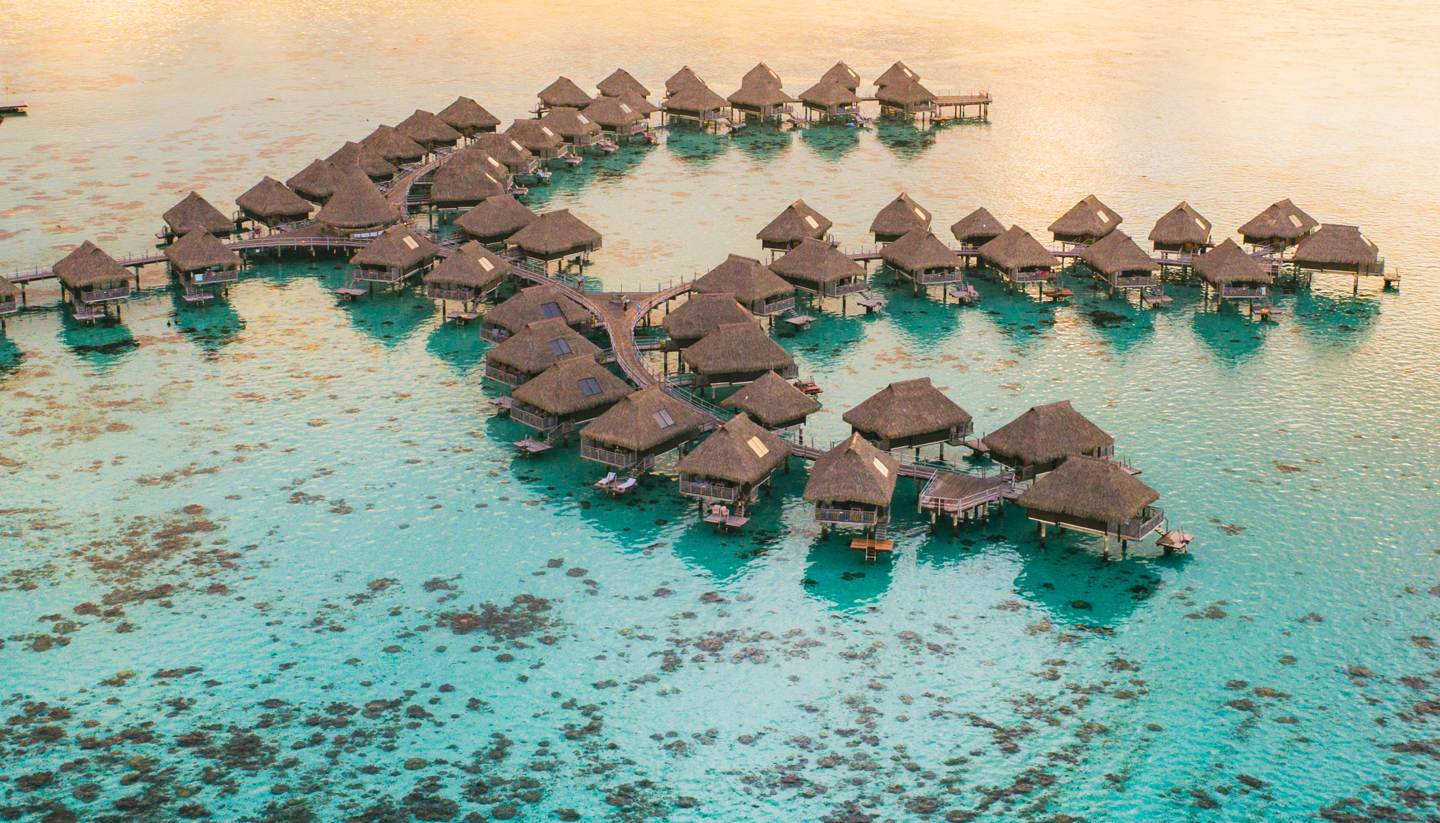The Islands of Tahiti Weather, climate and geography
Weather and climate
Best time to visit
Located south of the equator, The islands of Tahiti in the South Pacific enjoy a tropical climate all year round. Sea breezes keep the temperature cooler. There are two main seasons: a rainy (hot and humid) season from November to April and a dry (and cooler) season from May to October.
Tahiti experiences a year-round tropical climate with the west coast (Papeete, Punaauia, Paea) sheltered from the trade winds due to the mountainous interior. The rainy (hot and humid) season, also known as Austral Summer, runs from November to April. During this period, average highs hover between 30°C (86°F) to 32° (90°F). Most rainfall occurs during this period too, with Tahiti experiencing 12 to 17 rainy days a month. There is also a risk of cyclones. The dry season, also known as the Austral winter, runs from May to October. This is a fantastic time to visit Tahiti as the weather is at its best – with average highs between 29°C (84°F) and 30°C (86°F). The average precipitation also goes from 120mm (4.7 inches) in May to just 40mm (1.6 inches) in August.
Bora Bora has similar temperatures to those of Tahiti. The rainy season (November to April) sees the number of rainy days increases from six days in November to 18 days in March, before lowering to 13 days in April. The dry season (May to October) promises balmy temperatures with plenty of sunshine. The best month to visit is August with the average high at 28°C (82°F) and rainfall is at its lowest.
The Marquesas Islands are closer to the equator than the rest of French Polynesia, so the climate is warmer. On the island of Hiva Oa, the average high is 30°C (86°F), while the average precipitation is 1,165mm (50 inches) a year with June being the wettest month. The Marquesas islands are out of the path of tropical cyclones, hence there is no risk of cyclones here.
Required clothing
To stay cool during the day, lightweight cotton and linens are recommended. In the evenings, the temperature can drop slightly, so wearing an extra layer is advisable. Even in the smarter restaurants, the dress code is still casual, and sandals are acceptable everywhere. The tropical sun can be powerful – it's encouraged to wear plenty of sunblock, a sun hat and a sun-proof shirt. If you are visiting in the rainy season, make sure to have some rainwear handy.
Geography
French Polynesia comprises 118 islands and atolls divided into five archipelagos: the Society Archipelago, Tuamotu Archipelago, Marquesas Islands, Austral Islands and Mangreva Islands. The Windward and Leeward Islands, collectively called the Society Archipelago, are mountainous with coastal plains.
The Windward island group consists of Tahiti, Moorea, Tetiaroa, Mehetia, and Maiao - with Tahiti being the largest of the Windward group.
Tahiti is divided into two regions – the larger north-western region known as âTahiti Nuiâ or Tahiti Nui; the smaller, less developed south-eastern part is called âTahiti Itiâ or Tahiti Iti. Tahiti's landscape is characterised by lush rainforests and an array of rivers and waterfalls. The interior of Tahiti is dominated by Mount Orohena at 2,241m (7,352ft) and Mount Aorai at 2,066m (6,778ft), hence a large part is uninhabited, while the areas along the coast, including Papeete, are heavily populated.
Mo'orea lies next to Tahiti, a picturesque volcanic island with white sand beaches - famous ones include Ta'ahiamanu Beach and Tiahura Beach. There are ferries serving Pape'ete (Tahiti) and Vai'are wharf in Mo'orea daily.
To the west of Tahiti, the Leeward Islands (referring to a group of islands situated where the northeastern Caribbean Sea meets the western Atlantic Ocean) are generally lower in altitude. Leeward Islands include Bora Bora, Huahine, Maupiti, Raiatea, Tahaa, Manuae, Maupihaa, Motu One, and Tupai.
About 298km (185 miles) east of Tahiti, Tuamotu Archipelago comprises 80 coral atolls, forming the largest chain of atolls in the world.
The Marquesas Islands lie 1,497km (930 miles) northeast of Tahiti and are made up of two clusters of volcanic islands divided into a southern and northern group. The grass-covered Austral Islands south of Tahiti are scattered in a chain from east to west over a distance of 499km (310 miles).


